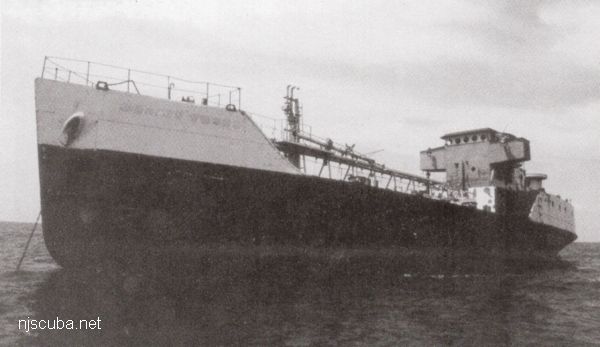
- Type:
- artificial reef, tanker, US Navy
- Built:
- 1945, RTC Shipbuilding, Camden NJ USA
- Specs:
- ( 174 x 33 ft ) 1390 tons
- Sunk:
- Monday June 25, 2007 - Delaware #11 Artificial Reef
- GPS:
- 38°40.590' -74°43.957'
More: YOG-93 ...

A tanker is a cargo ship designed to carry liquid cargoes, usually but not always fuel oils.
More: Tanker ...

More: YOG-93 ...

More: YOGN-8 ...